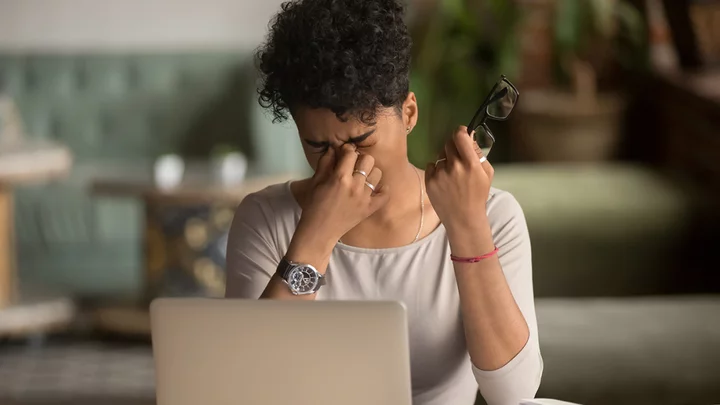The more time we spend staring at screens, whether at the office or at home, the more vulnerable we are to eye strain. You've probably already heard how blue light can hurt your eyes and affect your sleep, but you might not know all the ways to help reduce its impact on your health.
Below, we list a few blue-light-blocking glasses and software solutions that might alleviate eye strain, as well as explain some habits that can help. We also tell you which brands you should avoid.
What Is Blue Light?
On the most basic level, blue light is exactly what it sounds like: light that's blue. That's not the full picture, though, and this is where light and color theory comes into play, along with concepts like color temperature, Planck's Constant, and the black body radiation curve. Without going too far into the weeds, you simply need to understand one fact about light: The color white isn't universal.
There is no singular white, but rather a whole range of visible light that counts as white. Depending on the lighting conditions and what is radiating and reflecting light, white light can appear yellow (warm) or blue (cool) in color. For instance, the light that comes from an incandescent LED light bulb is warmer than the light that comes from a computer monitor. This effect is called color temperature and is measured in kelvin (K).
What we perceive as white light shifts along a range of about 2,700K to 7,000K. Confusingly, warmer light has a lower color temperature than cooler light, with the almost fiery glow of tungsten hitting around 2,800K and overcast sunlight hitting about 6,000K. Computer monitors typically set white at a cooler temperature to emulate natural sunlight, close to 6,500K. That means the light coming from your screen is quite blue; you can notice this difference if you compare a web page with a white background to a warm light bulb.
Blue light is often cited as the culprit for eye strain and even eye damage, so, naturally, the solution should be to warm up that light before it hits your eyes.
Is Blue Light That Bad?
Here's where it gets tricky: Claims from the manufacturers of blue-light-blocking glasses don't necessarily hold up to medical scrutiny. Essentially, blue light can't directly damage your eyesight. The American Academy of Opthalmology (AAO) notes that ultraviolet radiation can damage eyes but that computer monitors and other screens don't emit that kind of radiation. The whites are cool, but they aren't harmful. In fact, the AAO doesn't recommend any special eyewear for computer use.
This doesn't mean you should ignore the effects of staring at a screen all day. While the radiation might not hurt your eyes, fixating on a powerful light source a few inches or a few feet from your eyes for long periods of time can cause eye strain. Your eyes can become dry, irritated, or blurry, and you can even get headaches after you've looked at screens for hours. Blue-light-blocking technology can help reduce that strain by making the light appear more soothing and less bright.
The AAO recommends the 20-20-20 rule: every 20 minutes, you should look at something 20 feet away for 20 seconds to give your eyes a break. It's a good habit to get into, but it isn't always realistic, and it isn't the only thing you can do to help your eyes.
I sometimes get light-sensitive headaches, and I've found that tinted lenses can help reduce their frequency. For that, blue-light-blocking glasses are useful. They warm up the light by blocking out some wavelengths to give your eyes a rest. Their real value is relieving eye strain, not the promise of simply blocking blue light.
How to Buy Glasses Online
Shopping for glasses can be stressful. Luckily, we have a guide to sites that let you shop for frames and lenses at home. We note which services offer blue-light-filtering lenses, too.









